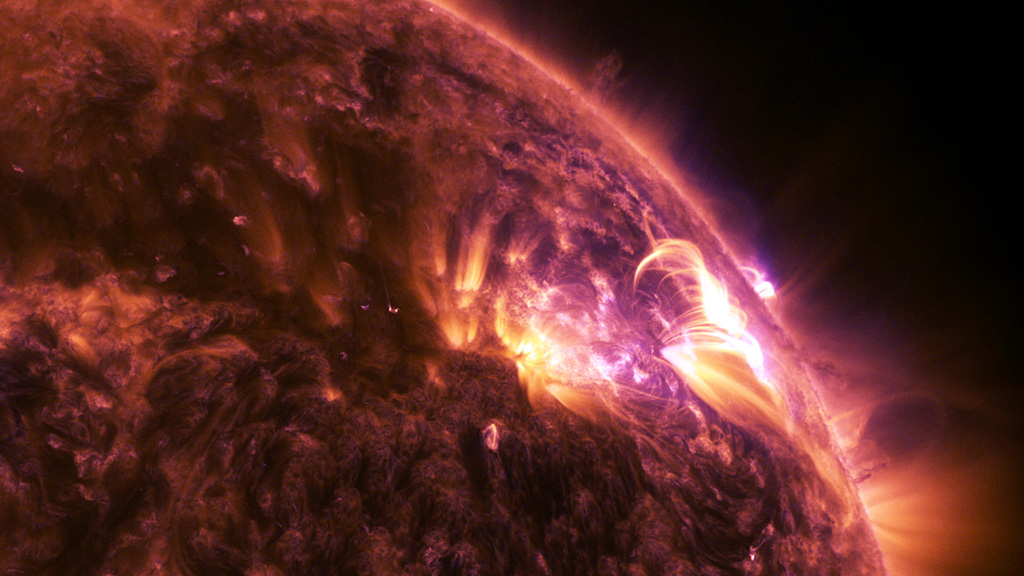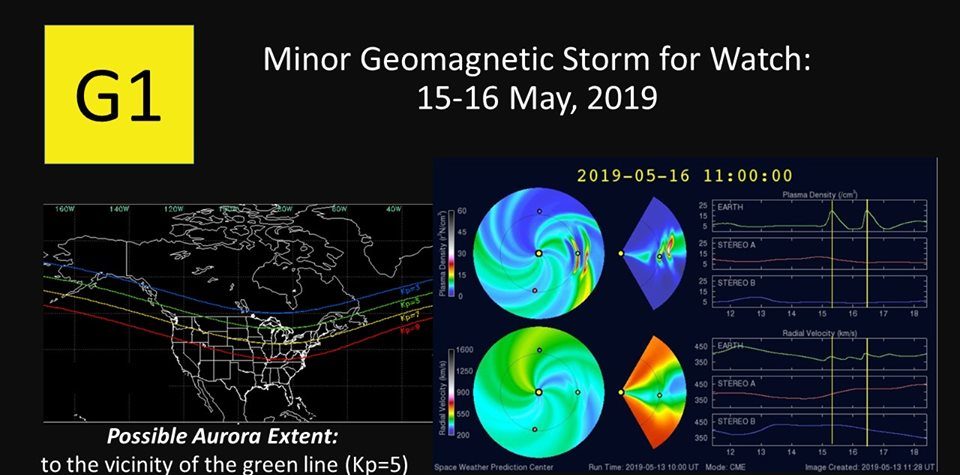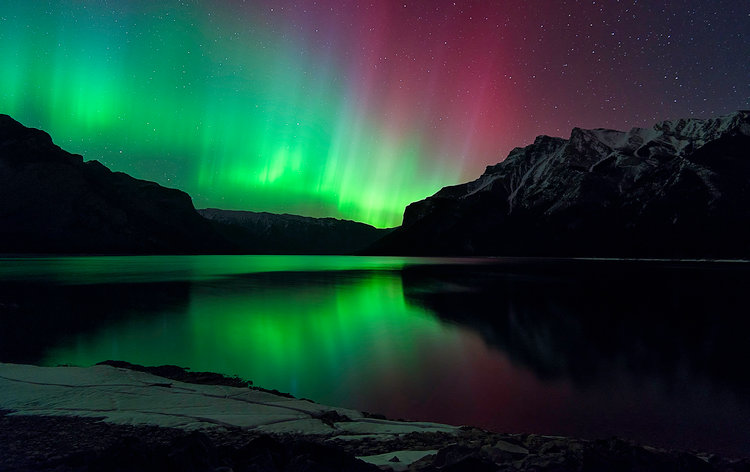Auroras are the huge natural green lights occurring in high latitude regions on the earth. But sometimes, due to a disturbance in space, Auroras may be seen at other places too.
A massive Geomagnetic storm is on its way towards earth, which can be responsible for Auroras occurring across some parts of US sky. Here is what we know about the upcoming Auroras and when it will be visible over US.
Reason for Auroras formation

Due to the recent CMEs (coronal mass ejections) occurring in our Sun, National Oceanic and Atmospheric Administration’s (NOAA) Space Weather Prediction Center has predicted it. A series of early explosions across the sun will result in the production of Auroras.
[fvplayer id=”1048″]
Earlier stated as a minor category geomagnetic storm between 15 to 17 May, it has now turned into a medium powerful geomagnetic storm and will affect us on 16th May. When the explosions take place on the surface of sun, it releases massive photons of energy. This electromagnetic energy is directed towards the earth’s atmosphere and the reaction of particles with each other produces this so-called Auroras.
Timeline for Auroras

These explosions have been in effect from May 10 in the region 2741 of earth. Soon this will reach the surface of the earth producing bright green Auroras over our sky.
The geomagnetic field from our Sun is likely to reach G1 (Minor) storm levels, with high chances for G2 (Medium) levels on 15 May due to the impacts of CME effects. 16 May is likely the date to respond to G2 storm levels, with a rare chance for G3 (Stronger) because of reactions from another CME. 17 May is more likely to have G1 level storms, with increases chances for G2 conditions due to another CME.
Where will be the Auroras Visible?

According to the reports, auroras may be visible primarily over northern parts of the U.S region. The main area of impact will be around 55-degree Latitude over the north. Even the people in lower parts such as New York or Washington state might witness the auroras. Idaho, Montana, North and South Dakota, Minnesota, Wisconsin, Michigan, Vermont, New Hampshire, and Maine will be the regions where auroras can be witnessed clearly.









